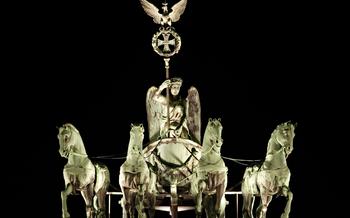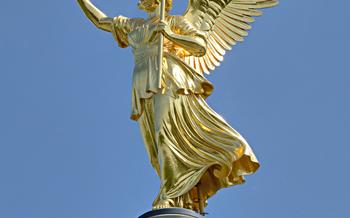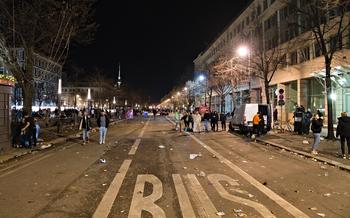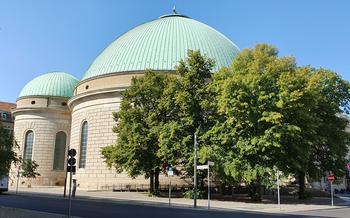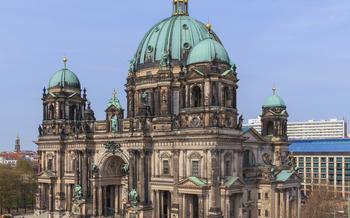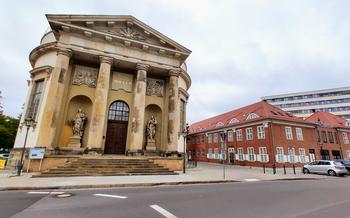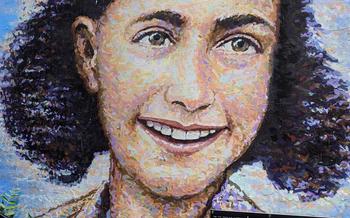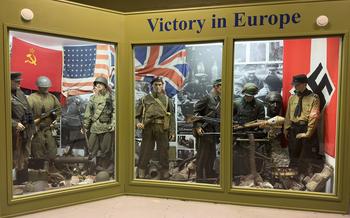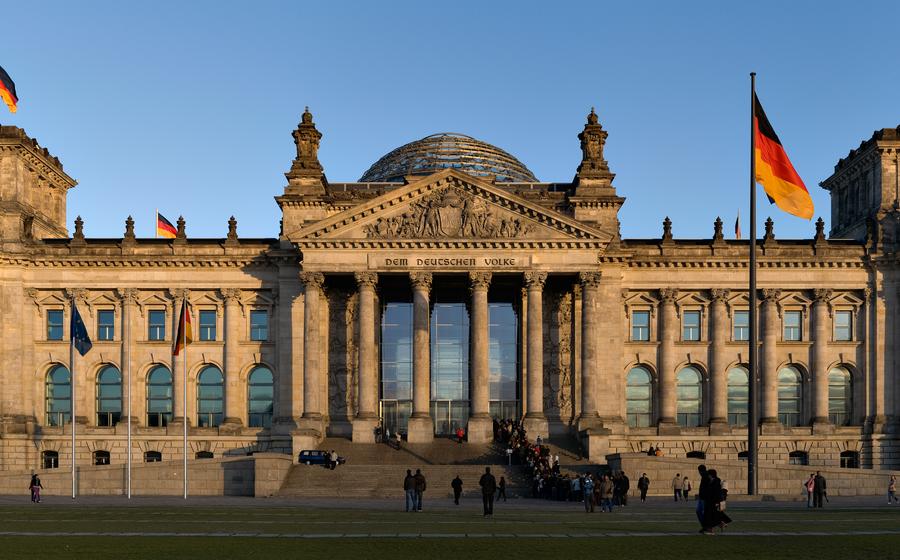
Reichstag Building
- Historical Significance
- Security Measures
- Highlights of the Guided Tour
- Views from the Dome
- Learning about German Politics
- Photography and Social Media
- Accessibility for Visitors
- Combining with Other Attractions
- Dress Code and Etiquette
- Time of Day for Visit
- Additional Tips for a Memorable Visit
- Insider Tip: Uncovering the Hidden Rooftop Terrace
Historical Significance
The Reichstag Building is a historical landmark that has witnessed significant events in German history. Constructed between 1884 and 1894, it initially served as the home of the German Empire's parliament. In 1933, the building suffered extensive damage in a fire, which was instrumentalized by the Nazi regime to consolidate power. After World War II, the building underwent extensive reconstruction and became a symbol of German reunification in 1990. Since 1999, it has housed the Bundestag, the German Parliament, and is a testament to the country's democratic values. The building's unique glass dome, designed by architect Norman Foster, offers visitors panoramic views of Berlin and represents transparency and openness in German politics.
Security Measures
The Reichstag Building is a government building, and as such, it has strict security measures in place to ensure the safety of visitors and the building itself. Visitors are required to undergo security checks before entering the building. These checks include passing through a metal detector and having their bags inspected. Visitors must also present a valid identification document, such as a passport or identity card.
Certain items are prohibited from being brought into the building, such as weapons, sharp objects, and large bags. Visitors are advised to leave these items at their hotel or in a locker. The security measures may seem stringent, but they are necessary to ensure the safety of everyone in the building.
Here are some tips for a smooth security check:
- Arrive early to allow enough time for the security checks.
- Be prepared to show your identification document and have your bags inspected.
- Avoid bringing prohibited items into the building.
- If you have any questions, please ask a security guard for assistance.
Highlights of the Guided Tour
The guided tour of the Reichstag Building offers a comprehensive overview of its history, architecture, and significance as the seat of the German Parliament. Visitors are taken through various parts of the building, including the plenary hall, the dome, and the rooftop terrace, each with its unique historical and architectural features.
In the plenary hall, visitors can learn about the legislative process and witness debates and votes firsthand. The hall's impressive design, with its curved seating arrangement and glass ceiling, creates a dynamic and engaging space for political discourse.
The highlight of the tour is undoubtedly the glass dome, a modern architectural marvel that symbolizes transparency and openness in German democracy. Visitors can ascend to the dome via an elevator, enjoying breathtaking panoramic views of Berlin's cityscape. The dome's unique design allows natural light to flood into the building, creating a bright and airy atmosphere.
The rooftop terrace offers another stunning vantage point, where visitors can admire the surrounding landmarks, including the Brandenburg Gate, the Tiergarten Park, and the Berlin Cathedral. The terrace provides an opportunity to take in the beauty of Berlin from a unique perspective and capture memorable photos.
Throughout the tour, visitors are accompanied by knowledgeable guides who share fascinating stories and anecdotes about the building's history and its role in German politics. Interactive exhibits and multimedia presentations enhance the learning experience, making the tour both informative and engaging.
Views from the Dome
The Reichstag Building's glass dome, designed by renowned architect Norman Foster, is undoubtedly one of its most striking features. As visitors ascend the spiral ramp, they are greeted with breathtaking panoramic views of Berlin, offering a unique perspective unlike any other. From the dome's viewing platform, visitors can marvel at the city's iconic landmarks, including the Brandenburg Gate, the Fernsehturm (TV Tower), and the Victory Column. The surrounding cityscape, with its blend of historic and modern architecture, creates a mesmerizing backdrop for capturing stunning photos and videos. Whether gazing out over the vibrant streets or admiring the tranquil greenery of the Tiergarten Park, the views from the dome provide a lasting memory of Berlin's grandeur and beauty.
Learning about German Politics
The Reichstag Building stands as a symbol of German democracy and the country's political system. It is the seat of the Bundestag, the German Parliament, which plays a crucial role in shaping the nation's policies and laws. During the guided tour, visitors gain insights into the functioning of the German government and the legislative process.
The plenary hall, where the Bundestag members convene for debates and votes, is a particularly significant location within the building. Visitors can learn about the history of German politics and the important decisions that have been made within these walls. The tour also highlights the role of the Bundesrat, the upper house of the German parliament, and its cooperation with the Bundestag.
For those interested in current political issues, the Reichstag Building offers opportunities to engage with contemporary debates and discussions. Visitors may have the chance to attend public hearings, committee meetings, or special events that provide a platform for discussing pressing issues facing Germany and the world.
Throughout the tour, visitors can learn about famous German politicians who have shaped the country's history. Stories of influential leaders, such as Otto von Bismarck, Konrad Adenauer, and Angela Merkel, bring the political significance of the Reichstag Building to life. Historical events that have taken place within its walls, such as the ratification of the Basic Law of the Federal Republic of Germany in 1949, are also highlighted, providing a deeper understanding of Germany's political journey.
Photography and Social Media
The Reichstag Building welcomes photography and encourages visitors to share their experiences on social media. However, there are a few guidelines to keep in mind. Flash photography is not permitted inside the building, as it can disturb other visitors and damage the exhibits. Additionally, photography is not allowed in certain areas, such as the plenary hall during sessions of the Bundestag.
Visitors are encouraged to use designated hashtags or platforms to share their photos and experiences on social media. This helps to create a community of visitors and allows others to discover the Reichstag Building through the eyes of fellow travelers. Whether you're capturing the stunning views from the dome or sharing a selfie with the iconic glass facade, be sure to tag your photos and use relevant hashtags to connect with other visitors and showcase your Berlin adventure.
Accessibility for Visitors
The Reichstag Building is committed to providing an inclusive and accessible environment for all visitors. The building features wheelchair ramps, elevators, and accessible restrooms to ensure that visitors with disabilities can navigate the building with ease. Visitors with disabilities can also request assistance from the friendly and helpful staff, who are always ready to provide any necessary support.
To ensure a smooth and enjoyable visit, visitors with disabilities are encouraged to contact the Reichstag Building in advance to discuss any specific requirements or concerns they may have. The staff will be happy to provide information on accessible parking, designated seating areas, and any other arrangements that may be needed to accommodate individual needs.
The Reichstag Building's commitment to accessibility extends to its guided tours as well. Visitors with disabilities can request sign language interpretation or audio description during the tour, ensuring that everyone has the opportunity to learn about the building's history and significance.
Combining with Other Attractions
The Reichstag Building is strategically located in the heart of Berlin, surrounded by a wealth of other captivating attractions. To fully immerse yourself in the city's rich history and culture, consider combining your visit with a tour of the nearby Brandenburg Gate, a symbol of German reunification and a poignant reminder of the Cold War era. Stroll through the serene Tiergarten Park, Berlin's largest inner-city park, and marvel at the majestic Victory Column, a monument commemorating Prussian military victories. Pay your respects at the Holocaust Memorial, a powerful and moving tribute to the victims of the Holocaust. By combining these attractions with your visit to the Reichstag Building, you'll gain a comprehensive understanding of Berlin's past and present, creating a truly memorable and enriching travel experience.
Dress Code and Etiquette
When visiting the Reichstag Building, it is important to be mindful of the dress code and expected etiquette as a sign of respect for this government institution. Casual attire is generally acceptable, but visitors should avoid wearing shorts, tank tops, or excessively revealing clothing. It is important to dress appropriately to maintain a professional atmosphere within the building. Additionally, visitors should be respectful of the ongoing parliamentary activities and avoid any disruptive behavior during the tour. Being mindful of these guidelines will contribute to a smooth and enjoyable visit to the Reichstag Building.
Time of Day for Visit
The timing of your visit to the Reichstag Building can significantly impact your experience. To avoid the throngs of tourists, particularly during the summer months, consider visiting early in the morning or late in the afternoon. These off-peak hours offer a more tranquil and intimate atmosphere, allowing you to fully appreciate the building's grandeur without jostling through crowds.
Alternatively, if you're seeking a truly magical experience, plan your visit around sunset. As the golden hues of the setting sun bathe the city in a warm glow, the panoramic views from the glass dome become even more breathtaking. Witnessing the cityscape transition from day to night is an unforgettable moment that will leave a lasting impression.
Whether you prefer the tranquility of the early morning, the vibrant energy of the late afternoon, or the enchanting allure of sunset, carefully consider the time of day for your visit to optimize your experience at the Reichstag Building.
Additional Tips for a Memorable Visit
To make the most of your visit to the Reichstag Building, consider these practical tips:
-
Comfortable Footwear: As you'll be doing a lot of walking, wear comfortable shoes to navigate the building's spacious halls and climb the stairs to the dome.
-
Dress in Layers: The temperature inside the building can fluctuate, so dress in layers to adjust to changing conditions.
-
Savor Local Cuisine: Don't miss the opportunity to try traditional German cuisine at the Reichstag's restaurant, which offers stunning views of the city. Alternatively, explore the nearby restaurants for a wider range of culinary experiences.
-
Guided Walking Tour: Enhance your understanding of Berlin's rich history and culture by joining a guided walking tour of the surrounding area. Discover hidden gems and learn about the city's captivating past.
-
Explore Government Buildings: Take advantage of the Reichstag's proximity to other government buildings, such as the Brandenburg Gate or the Federal Chancellery. Explore these landmarks to gain insights into Germany's political system and history.
Insider Tip: Uncovering the Hidden Rooftop Terrace
Beyond the iconic glass dome, the Reichstag Building holds a hidden gem – a secluded rooftop terrace that offers breathtaking panoramic views of Berlin. While not accessible during regular guided tours, visitors can request special permission to visit the terrace through their tour guide or by contacting the Bundestag visitor service in advance. Ascend the stairs leading from the dome to discover this tranquil oasis, where you can soak in the city's skyline, admire the intricate details of the building's architecture, and capture unique photos from a hidden vantage point. This exclusive experience is a true insider's secret that will leave you with unforgettable memories of your visit to the Reichstag Building.
